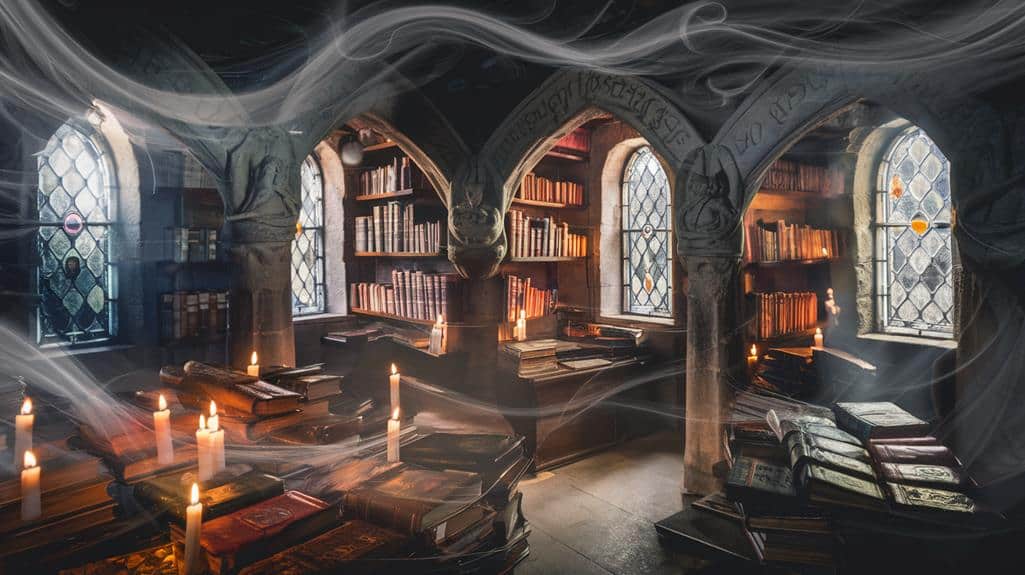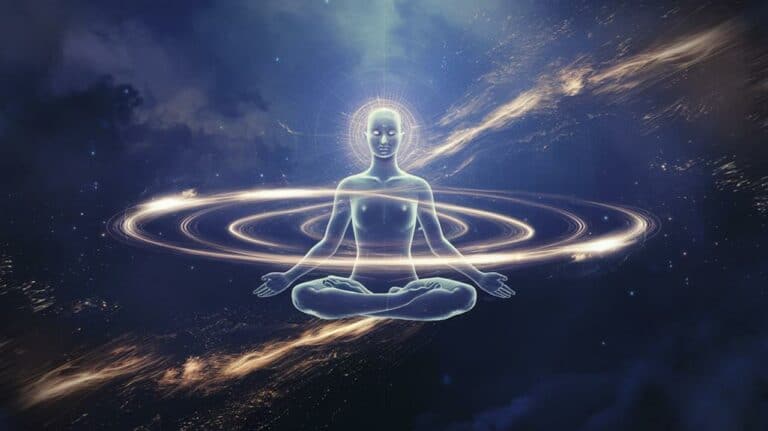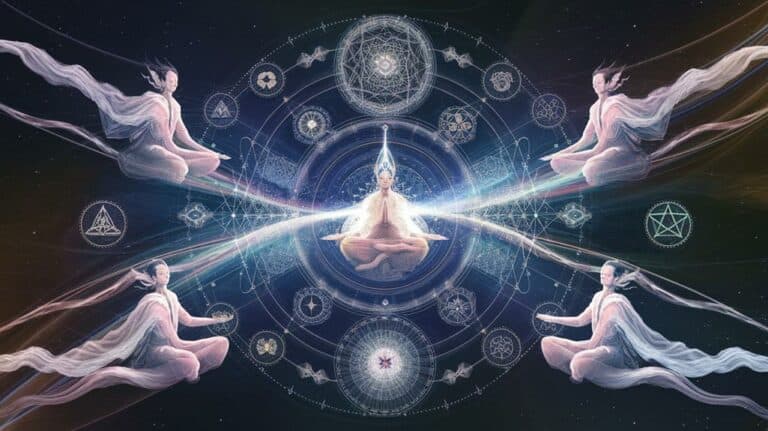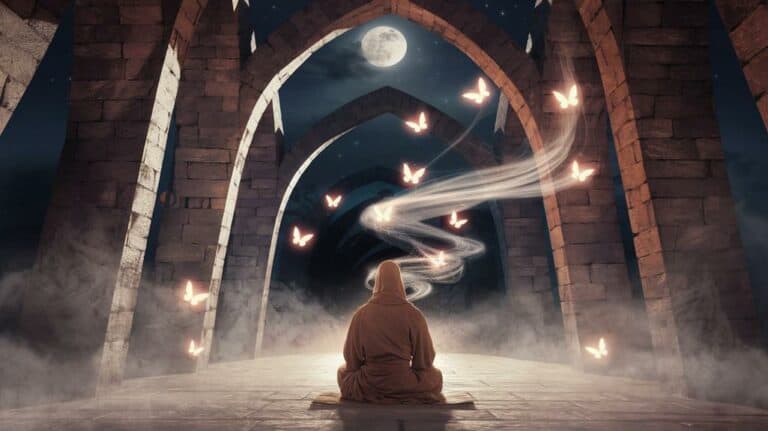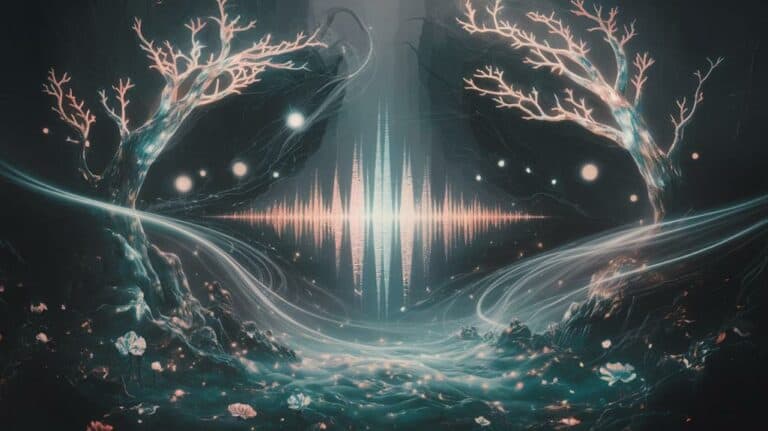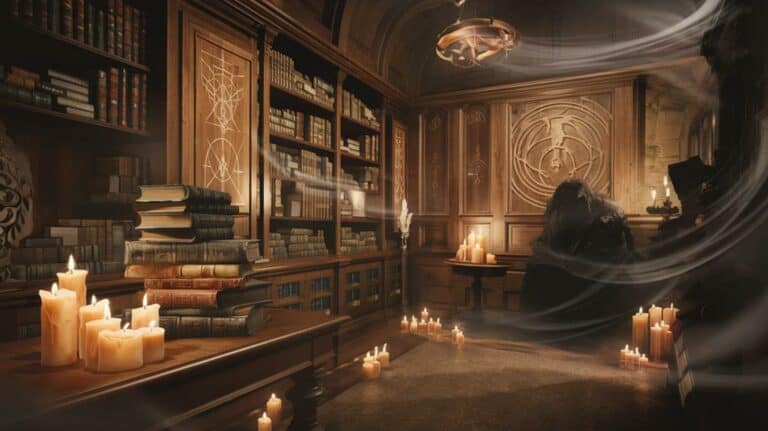What Is Mysticism in Literature?
When you encounter mysticism in literature, you’re stepping into a sphere where ordinary reality dissolves into extraordinary spiritual experiences. You’ll find yourself maneuvering through texts that explore the ineffable – those profound moments of connection with something greater than ourselves that can’t quite be captured in words. Yet authors throughout history have tried, weaving rich tapestries of symbolism and metaphysical insights into their work. From ancient Sufi poetry to modern metaphysical novels, this literary tradition beckons you toward deeper understanding of both divine mysteries and human consciousness. The question remains: how do these writers manage to express the inexpressible?
Origins of Literary Mysticism
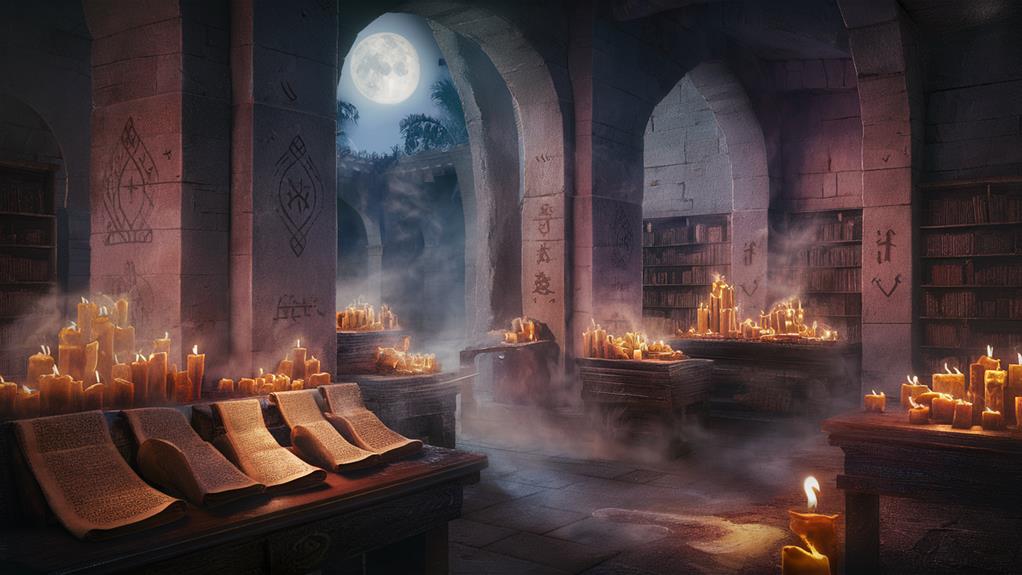
Since ancient times, mysticism has woven itself into the fabric of literature through sacred texts, oral traditions, and spiritual poetry. You’ll find its earliest traces in humanity’s primal stories, where your ancestors sought to bridge the gap between the visible world and the ineffable divine.
As you explore deeper into literary mysticism’s roots, you’ll discover how ancient civilizations – from Egypt to India, Greece to China – developed sophisticated systems of mystical expression. You’re inheriting a tradition where shamans, priests, and poets served as intermediaries between earthly and celestial domains, crafting verses that still resonate with transcendent power.
In these foundational texts, you’ll encounter recurring patterns: the hero’s journey into unknown domains, the seeker’s quest for divine unity, and the mystic’s struggle to articulate the inexpressible.
You’re part of an unbroken chain that stretches from Mesopotamian temple hymns through medieval Christian mysticism to modern spiritual literature. Each era has added its own voice to this eternal conversation, yet you’ll notice how the core elements remain: the yearning for transformation, the search for ultimate truth, and the power of words to illuminate the path to higher consciousness.
Common Mystical Themes
Throughout mystical literature, several universal themes emerge that transcend cultural and temporal boundaries. You’ll find that the quest for unity with the divine or ultimate reality stands as perhaps the most fundamental theme, expressing humanity’s timeless yearning to bridge the gap between the mundane and sacred domains.
As you explore mystical texts, you’ll encounter the recurring motif of transformation – the death of the ego and rebirth of the spiritual self. This metamorphosis isn’t merely symbolic; it’s described as a visceral experience where you’re stripped of worldly attachments and reconstructed in divine light.
The ineffable nature of mystical experiences presents itself consistently, as writers struggle to capture in words what lies beyond ordinary perception. You’ll notice how they often turn to paradox and metaphor, describing what can’t be described through conventional language.
The concept of sacred time versus profane time emerges frequently, where you’re invited to step outside linear chronology into an eternal present moment. These themes weave together to create a tapestry of spiritual exploration that continues to resonate with seekers across generations.
Notable Mystical Writers
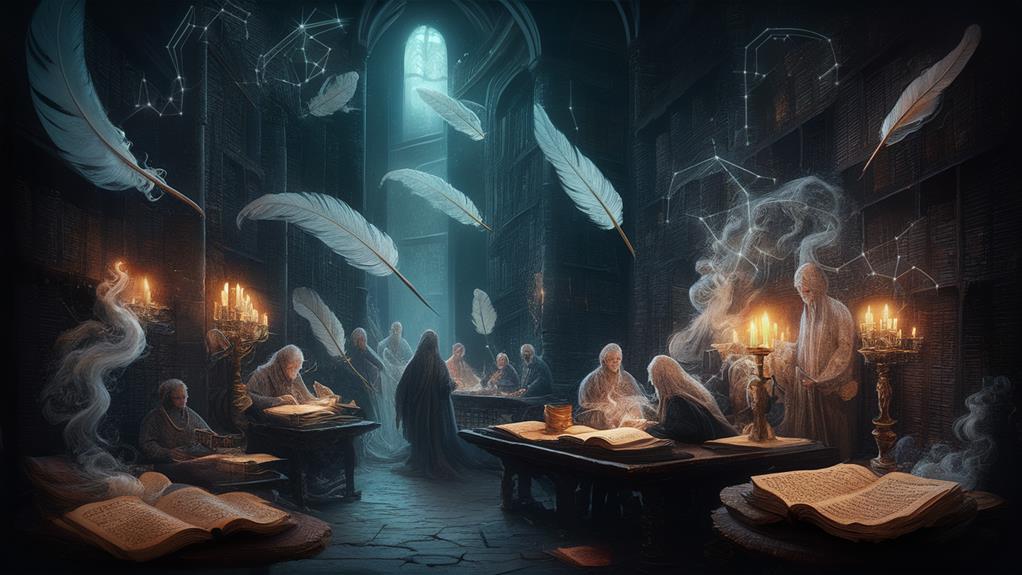
These universal mystical themes find powerful expression through the works of history’s most influential mystical writers.
You’ll discover William Blake’s visionary poetry merging heaven and earth, while Rumi’s ecstatic verses invite you to dissolve into divine love. Through their words, you’re transported beyond ordinary perception into domains of heightened awareness and spiritual insight.
When you explore William Butler Yeats‘s works, you’ll encounter his deep engagement with esoteric traditions and the symbolic language of the unconscious.
Meanwhile, Hermann Hesse’s “Siddhartha” guides you along the path of spiritual awakening, where you’ll witness the protagonist’s journey from seeking to enlightenment.
In the works of Kahlil Gibran, you’ll find wisdom teachings cloaked in poetic metaphor, speaking directly to your soul’s deepest yearnings.
These writers don’t merely describe mystical experiences; they create portals through which you can access transcendent states yourself.
Through St. John of the Cross’s “Dark Night of the Soul” or Teresa of Ávila’s “Interior Castle,” you’re invited to traverse the landscape of spiritual transformation, discovering that their personal journeys mirror your own quest for meaning and divine connection.
Symbols and Archetypes
Mystical literature draws heavily upon symbols and archetypes that bridge the gap between ordinary reality and transcendent truth. You’ll find these universal patterns woven throughout mystical texts: the sacred mountain representing spiritual ascent, the transformative journey through darkness, and the eternal symbol of light piercing shadows.
These archetypal elements aren’t mere literary devices—they’re keys that reveal deeper domains of consciousness within you. When you encounter mystical symbolism, you’re tapping into what Jung called the collective unconscious, where ancient wisdom resides in forms that transcend culture and time.
You’ll recognize the recurring motifs: the wise teacher, the sacred grove, the divine feminine, the cosmic tree connecting heaven and earth. Water symbolizes spiritual cleansing and rebirth, while the serpent represents both earthly wisdom and transformation.
The symbols speak directly to your soul’s understanding, bypassing rational thought to reveal truths that can’t be expressed through ordinary language. Through these timeless images, you’re invited to discover the hidden correspondences between your inner world and the vast mysteries of existence, creating a bridge between your everyday experience and the ineffable domains of spirit.
Modern Mystical Literature
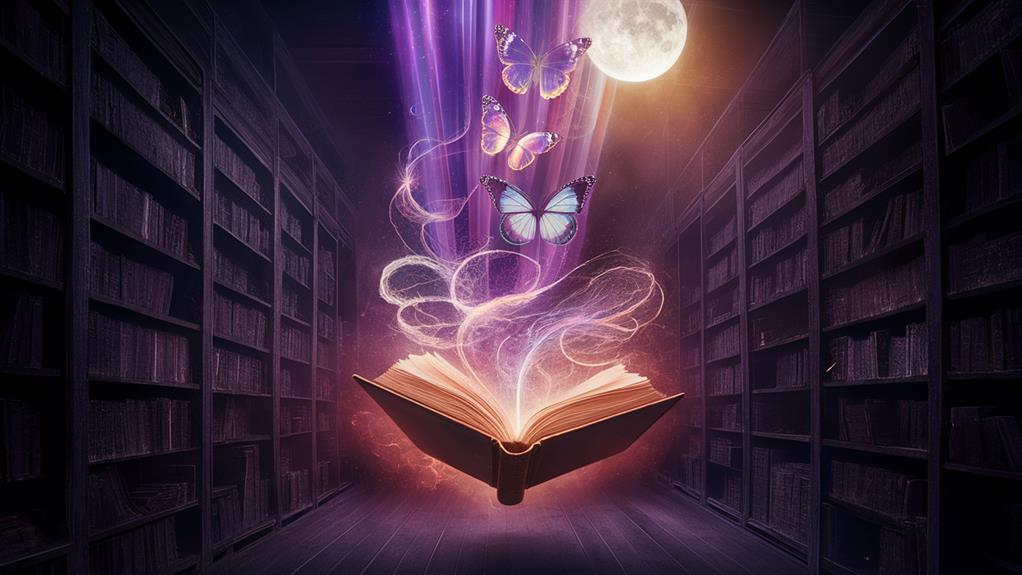
In spite of modern rationalism, mystical literature continues to thrive in contemporary works through both fiction and non-fiction. You’ll find this spiritual undercurrent flowing through works like Paulo Coelho’s “The Alchemist,” where personal destiny intertwines with universal wisdom, and Mary Oliver’s poetry, which transforms nature observation into transcendent revelation.
Contemporary mystical literature doesn’t require you to abandon reason; rather, it invites you to expand your consciousness beyond conventional boundaries. You’ll discover how authors like Eckhart Tolle merge ancient spiritual insights with modern psychological understanding, while novelists such as Haruki Murakami weave parallel realities that challenge your perception of what’s possible.
Through magical realism, writers like Isabel Allende and Salman Rushdie have created worlds where the mystical and mundane dance together, reflecting deeper truths about human existence.
When you explore today’s mystical literature, you’re joining a tradition that’s evolving to meet modern sensibilities while preserving timeless questions about consciousness, reality, and the nature of being. These works offer you pathways to both personal transformation and universal understanding, bridging the gap between ancient wisdom and contemporary experience.
Conclusion
As you explore mystical literature, you’ll discover it’s more than just words on a page – it’s a gateway to profound spiritual understanding. Through its rich symbolism, transformative themes, and eternal truths, literary mysticism continues to illuminate humanity’s deepest questions. Whether you’re drawn to ancient mystics or contemporary spiritual writers, you’re participating in an ageless tradition that bridges the gap between ordinary reality and divine consciousness.



